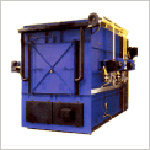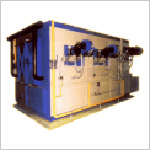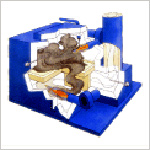ARE YOU INTERESTED?
CONTACT US:
| Phone: | +421 2 4341 5963 |
| +421 2 4363 8407 | |
| E-mail: | office@kzsro.sk |
BIO waste incinerators
|
|
SNO-BRANDED WASTE INCINERATORS HAVE BEEN DEVELOPED TO ELIMINATE BOTH INFECTIOUS AND NON-INFECTIOUS WASTE MATERIAL CLEANLY, ECOLOGICALLY SOUNDLY AND WITHOUT ODOUR.
|
THE SCOPE OF APPLICATION OF SNO WASTE INCINERATORS COVERS:
We cooperate closely with specialised companies in the field of environmental technologies, which makes us your qualified partner in addressing the issues of waste disposal. SNO FUNCTIONALITY:
|
|
| Model | Space required in the workplace |
Weight of |
Capacity |
Dosage quantity per cycle |
||
|---|---|---|---|---|---|---|
| Width | Depth | Height | ||||
| m | m | m | t | kg/h | kg | |
| SNO-1 | 5,2 | 5,3 | 2,5 | 8,0 | 20 | 20 |
| SNO-2 | 5,3 | 5,5 | 2,7 | 8,5 | 30 | 30 |
| SNO-3 | 5,8 | 5,6 | 2,8 | 9,0 | 40 | 40 |
| SNO-4 | 6,9 | 6,2 | 3,2 | 15,0 | 75 | 75 |
| SNO-5 | 5,6 | 8,1 | 3,2 | 20,0 | 100 | 200 |
| SNO-6 | 6,1 | 8,4 | 3,2 | 28,0 | 200 | 200 |
| SNO-7 | 7,0 | 11,0 | 3,4 | 35,0 | 300 | 1000 |
| SNO-8 | 7,0 | 12,0 | 3,4 | 48,0 | 500 | 1000 |
|
|
LIQUID WASTE INCINERATOR SNO-3
|
DOUBLE-CHAMBER DESIGN
|
|
Our current projects
Manufacturing and supply of TD thermal cleaning equipment for clients in:
Arens, Czech Republic
Entlackungsfabrik, Germany
Tiefenbacher, Austria
Delivery of Wagner powder coating technology from Germany to a client:
Komad, Slovak Republic


